MeWow! These feral Seattle cats are hunting mice in local breweries
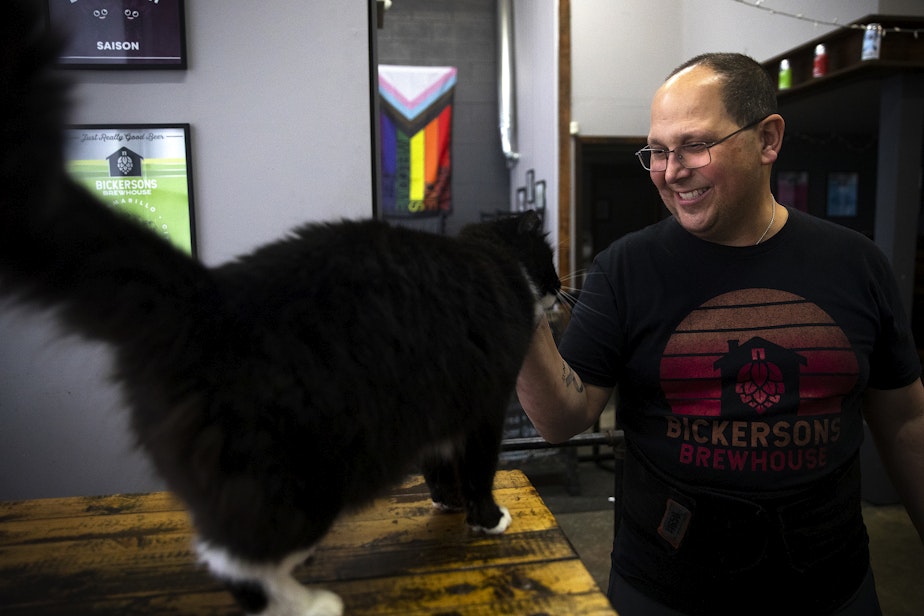
The black and white cat known as C-003 (more on her name later) keeps watch over Holy Mountain Brewing Company in Seattle’s Interbay neighborhood from a corner of the brewery. It’s a perfect vantage point for her to spot unwanted visitors – human or otherwise.
C-003 is among a crew of feral cats placed in breweries and industrial sites to keep pests away. It’s easier than laying mouse traps every day – a grim and unnerving task – and it’s safer than putting out rat poison. The thinking is that if barn cats keep the mice away, so too can city ferals – so why not put them to work, while giving them a safe home at the same time?
C-003, a short-haired tuxedo with judgy eyes, has been cleaning house for Holy Mountain since April 2022, receiving stellar reviews from her bosses. She, like her colleagues in the business, works in the shadows. Customers and employees alike may not know she was there at all, except for one thing.
“They have the bodies,” Deborah Sorensen said; she’s the woman you see if you need this sort of messy job done right.
Sorensen is co-founder of the Alley Cat Project, a TNR (trap, neuter, return) group that has also found a unique niche for some feral cats: pest control.
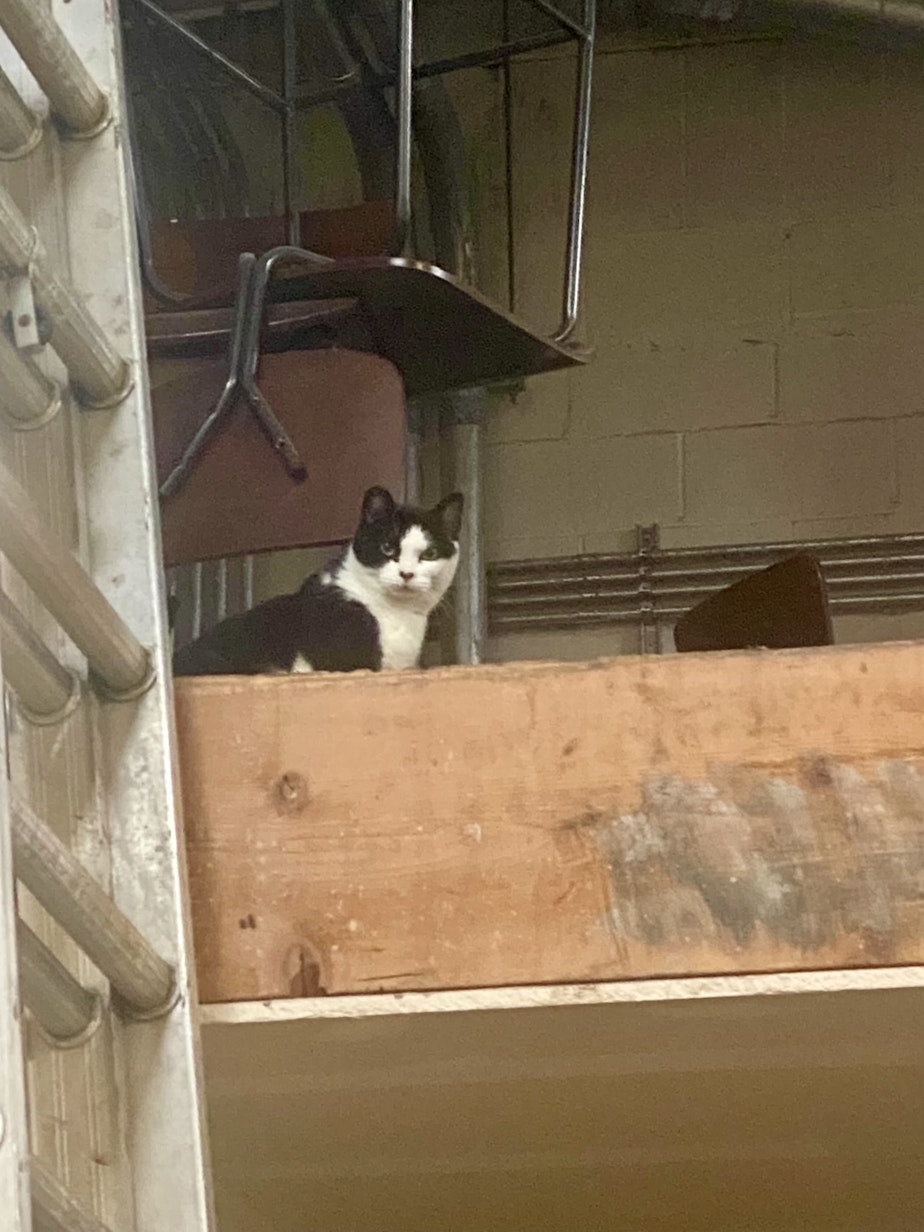
“Mice just kind of come with breweries,” said Ryan Williams, Holy Mountain’s art director and self-described cat wrangler. “We have thousands of pounds of grain at any time. Pallets come in and out, so mice can come in on pallets from other places, from God knows where. ... It was just really getting out of control – until we got the cats.”
Before that, Williams said they’d catch as many mice as traps set each day.
“Now I change a litter box five days a week," he said. “But I’m not setting mouse traps, which is much worse.”
Holy Mountain has received an “excellent” food safety rating from Public Health — Seattle & King County. Cats are not considered an official means of pest control, said Keith Chhum, an investigator with the Environmental Health Services Division. Using mousers could be a violation of King County rules, he said, though not a critical one.
C-003 is considered part of the daily operation.
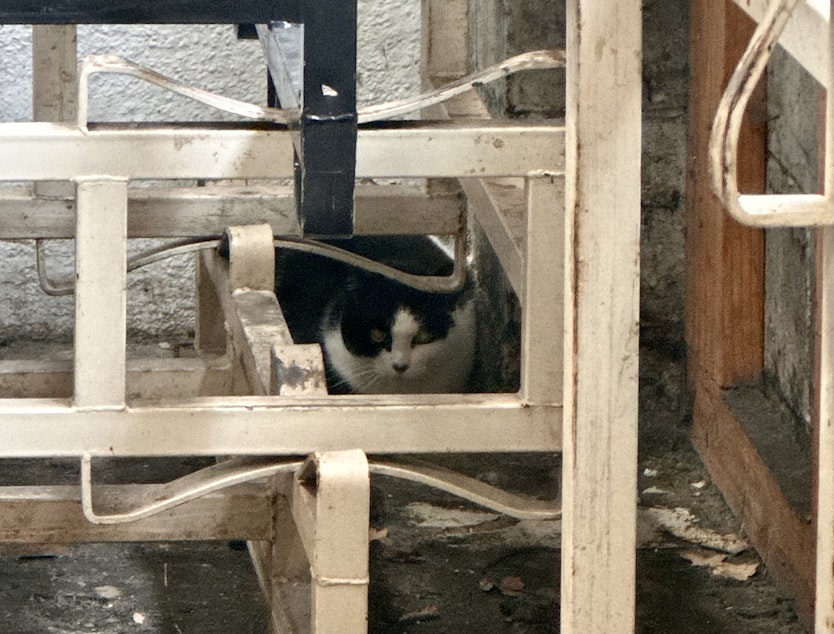
Her name follows a Holy Mountain standard for equipment, Williams said. A fermenter may be labeled F-1. So, the brewery named the cat in similar fashion; C for cat, and 003 because she’s the third mouser to patrol the brewery.
She came to Holy Mountain with her sister, C-002, who escaped months later and hasn’t been seen since. Perhaps she was running from her past, or perhaps she was ready to trade mouse meat for Fancy Feast, like her predecessor C-001, now a happily retired lap cat.
Typically, the goal of a trap-neuter-return operation is to return a feral cat to where it was found, as the name implies. Feral cats are trapped, neutered to keep breeding down, and returned to their homes. But sometimes they can’t be returned – maybe the area is dangerous, or there is bad traffic, or a cat has come to rely on someone for food who is no longer there.
The Alley Cat Project must then find a safe option for these essentially wild animals, feral cats with the drive to hunt. Ergo, the breweries.
Breweries interested in mousers must be interviewed and provide a site visit to ensure the cats will be safe. The cats must work indoors to keep them away from traffic, predators, and local wildlife, not including mice, of course.
The Alley Cat Project isn’t the only mouser outfit in town (though, according to Sorensen, it is the most rigorous when it comes to screening applicants).
Regional Animal Services of King County runs a program that harkens back to the rural mousers that patrol farm facilities. “Barn Cats R Us” is a volunteer-led operation much like the Alley Cat Project that rehomes cats to work in barns, garages, and yes, breweries.
(In 2020, The Seattle Times dove into the world of feral cats working as mousers at other kinds of industrial sites.)
Barns R Us volunteer Ruth Schaefer said she’s placed cats with Hellbent Brewing Company in Lake City since 2017, and she helped another cat named Simcoe make Bickersons Brewhouse in Ballard its home in 2022.
Like C-003, Simcoe sports a black and white tuxedo coat, though hers is much fluffier, like her personality. Unlike C-003, Simcoe has grown cozy with Bickersons’ customers and staff. She even has her own Instagram account.
 1 of 3Simcoe the cat at Bickersons Brewhouse on Wednesday, January 31, 2024, in Seattle.
1 of 3Simcoe the cat at Bickersons Brewhouse on Wednesday, January 31, 2024, in Seattle. “I would say she’s about 50-50,” Bickersons co-owner and head brewer Frank Castro said. “She’s feral when she needs to be, but she likes the attention of people – to a point.”
She’ll greet the first few staff members and customers as they trickle in, demanding love and even teasing dogs trailing after their humans. Once she’s had enough, though, Simcoe wanders off to one of her many hiding places or sprawls out in the open long enough to snap another photo for her social media followers.
Her vibe is diva: She loves her public on her own terms.
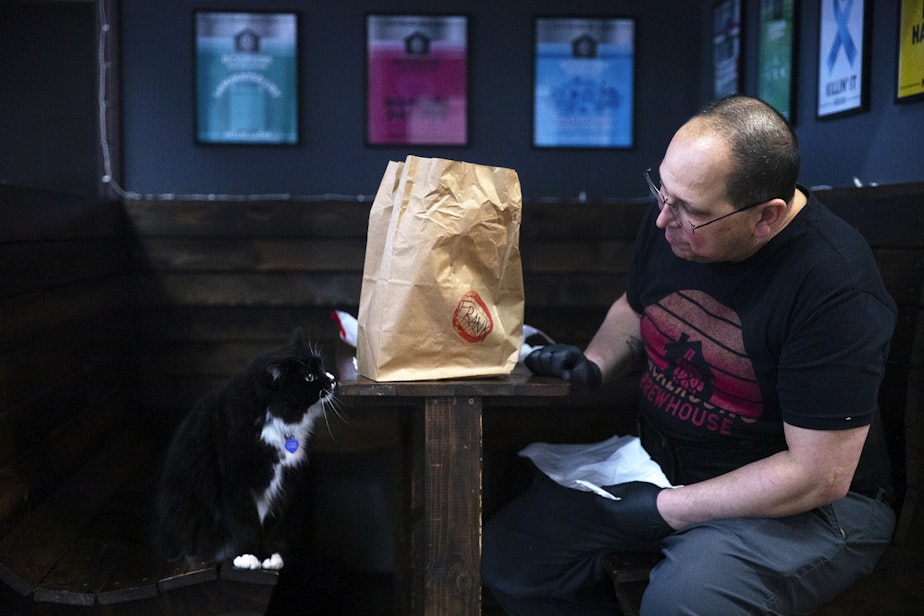
When she is on the job, Simcoe is an accomplished mouser. Castro said she has been known to deliver “treats” directly to employees and even customers.
“We’d rather just find them when we open,” Castro said of those rare occurrences. “But if she’s chasing something that happened to be there when we’re open, you know, most people have understood and said, ‘well, that’s good. They’re not running around this place while I’m trying to drink a beer.’”
That beats laying out mousetraps, he added, or using chemicals, which could travel down the food chain if, say, an owl scoops up a mouse that’s eaten poison.
Besides, Simcoe is more than furry pest control: “She’s part of the Bickersons family,” Castro said.
Bickersons also has an “excellent” food safety rating from Public Health — Seattle & King County.
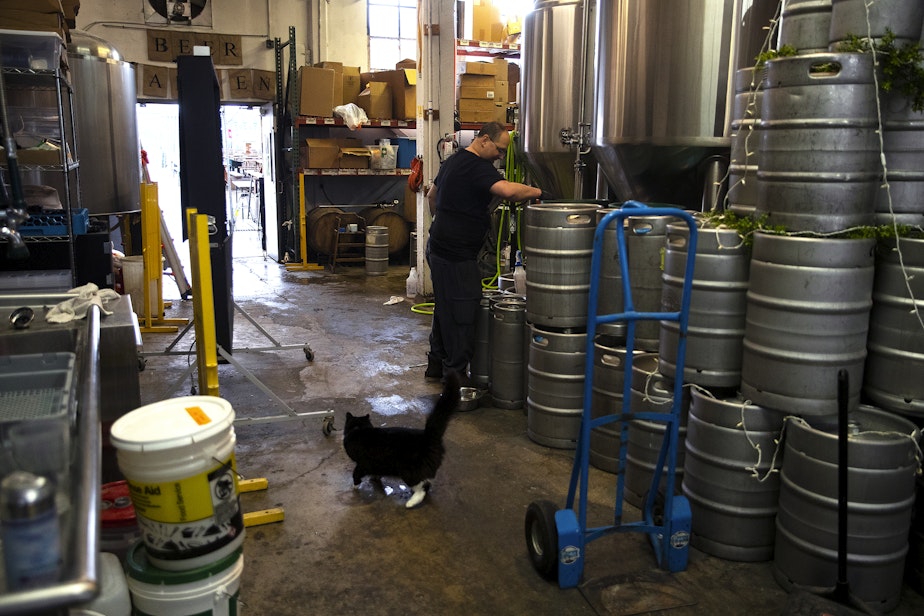
Back at Holy Mountain Brewing, C-003 is like the broody teenager of the brewery family. She’s keeping to herself in her usual corner as the taproom fills with thirsty customers.
“She never comes anywhere near the taproom,” wrangler Ryan Williams said. “Our customers have no idea that there is a cat here.”
C-003 likes it that way, perhaps so much so that as KUOW wrapped up reporting on this story, she’d gone missing.
Deborah Sorensen from the Alley Cat Project broke the news in a text, just a few days after Ryan Williams sang the cat’s praises. Was she running from her past? Is it a coincidence that she took off only after a reporter started asking (not so) tough questions?
“I just learned from Ryan that [C-003] has just escaped after two years,” Sorensen texted. “We’re going to try to set traps outside to get her back, and he will leave treats and such out. Hoping to get her.”
That’s just how the business goes sometimes.
“They still have a little bit of the wildcat still in them,” Sorensen said before C-003 went missing. “I don’t think that even well-socialized cats [like Simcoe] ever lose that. I think they’re all a little bit feral inside.”









